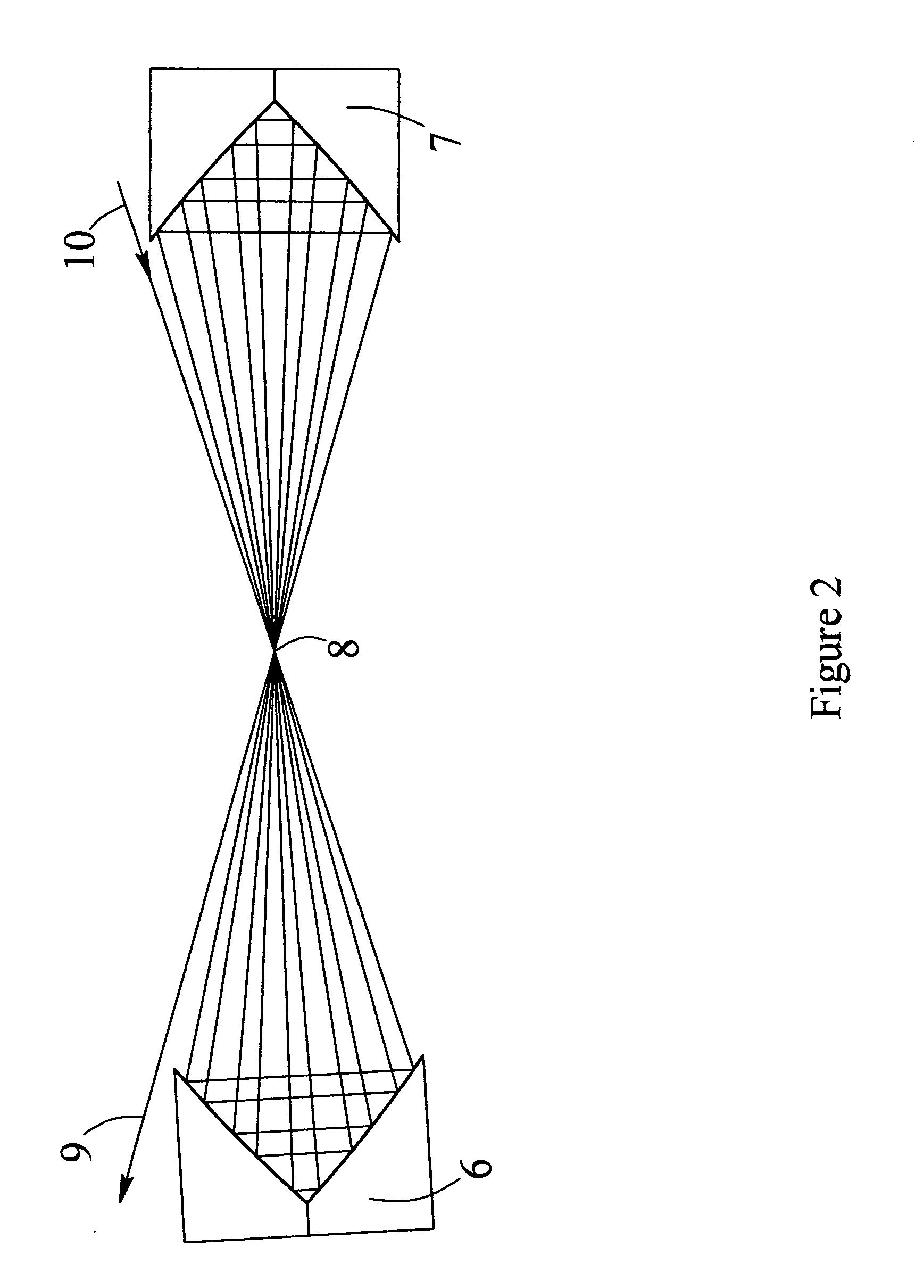Optical multipass cell for repeated passing of light through the same point
- Summary
- Abstract
- Description
- Claims
- Application Information
AI Technical Summary
Benefits of technology
Problems solved by technology
Method used
Image
Examples
Embodiment Construction
[0043]The optical multipass unipoint cell configurations described herein are based on the special optical property of the optical reimaging element, consisting of two symmetrically opposing, identical, confocal, and coaxial parabolic reflective surfaces, to refocus any ray of light coming from the common focal point onto one of said surfaces, back to said focal point by the other surface.
[0044]One way in which this optical reimaging element can be made is by assembling together a pair of identical parabolic mirrors 3 and 3′ as shown in FIG. 1. An off axis parabolic mirror is made by one of the standard techniques such as diamond turning.
[0045]The flat surface 20 is then cut into the mirror through the focal point 1 and perpendicular to the axis of the parabola 5. Two such identical mirrors 3 and 3′ are then turned face to face in a mirror image fashion and joined together on said cut surfaces 20. The two parabolic surfaces thus arranged have a common axis 5 and a common focal point...
PUM
 Login to View More
Login to View More Abstract
Description
Claims
Application Information
 Login to View More
Login to View More - R&D
- Intellectual Property
- Life Sciences
- Materials
- Tech Scout
- Unparalleled Data Quality
- Higher Quality Content
- 60% Fewer Hallucinations
Browse by: Latest US Patents, China's latest patents, Technical Efficacy Thesaurus, Application Domain, Technology Topic, Popular Technical Reports.
© 2025 PatSnap. All rights reserved.Legal|Privacy policy|Modern Slavery Act Transparency Statement|Sitemap|About US| Contact US: help@patsnap.com



